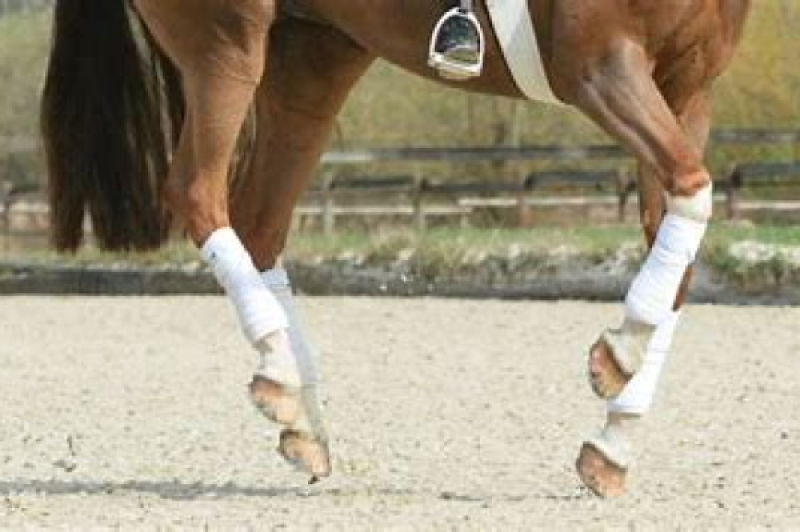Mastering Flying Lead Changes: A Guide for All Riders
Flying changes are a big milestone in riding. This guide breaks down how to teach them step-by-step, plus tips for timing, balance, and troubleshooting when things don’t go as planned.

A flying lead change is that sleek, mid‑air swap of leads during canter, a must in the hunters/jumpers/equitation, eventing, dressage, and reining. This step‑by‑step guide breaks down how to teach and troubleshoot flying changes using proven expert methods.
Core Principles Before You Begin
Before teaching flying changes, ensure these are solid:
- Straightness, impulsion & balance: Your horse should respond promptly to leg aids, stay aligned shoulder-to-hip, and lift through the hindquarters. This is the foundation of a good change.
- Clean canter departs & simple changes: Practice handling canter departs from trot or walk with soft, accurate aids; then develop trot to canter or halt to canter transitions as stepping stones. Make sure your horse will easily pick up both leads, both directions, at any point in the arena.
- Counter‑canter training: Riding “wrong‑lead canter” or counter‑canter, improves control, strength, bend, and body awareness.
Practice the Following Sequential Exercises
1. Establish Straightness and Balance at the Canter
Rider stays tall, with eyes forward and shoulders square.
Focus on relaxation, forward energy, and alignment nose-to-tail.
Canter along the rail with the horse tracking straight, neck soft, and hindquarters engaged.
2. Sharpen Canter Departures
Practice transitions in both directions to improve responsiveness.
Support with outside leg and heel for clean departures.
From walk or trot, ask for canter using inside leg and slight rein bend.
3. Leg-Yield at Walk and Trot
Reinforces lateral control and weight shifting.
Avoid over-bending; keep the shoulders straight and the horse moving forward.
Ride slightly off the rail & ask the horse to move its haunches away from your leg.
4. Introduce Simple Lead Changes Through Trot
Use a leg-yield off the new inside leg during the trot to shift weight to the outside before asking for the new lead.
Gradually reduce trot steps until transitions are smooth and balanced.
Ride canter–trot–canter transitions between leads.
5. Leg-Yield at the Canter
Once the horse yields consistently, straighten the body and canter forward.
At the canter, apply outside leg behind the girth to shift the horse’s hindquarters laterally. Be careful not to encourage the flying lead change too early.
6. Introduce the Leg-Switch Cue
Don’t rely on reins—use seat and legs to cue the change.
Time the cue just before the third beat of the canter stride.
While cantering straight, perform a quick leg-switch: new inside leg forward, new outside leg behind the girth.
7. Use Patterns to Set Up the Change
Use rollback turns or long sides to help the horse anticipate the direction and stay balanced.
Straighten your horse between turns before asking for the change.
Ride figure-eights, loops, or serpentines to prepare for changes between arcs. Some call this the ice cream cone pattern.
8. Ask for the Flying Change
If the horse misses the change, calmly return to trot, regroup, and try again. You may add a pole on the ground at the spot where the change is to take place. This will increase the horse’s moment of suspension and give him a little more time to figure out how to change his lead in the air.
Stay centered; avoid overusing the inside rein. Do not lean or look down.
Shift the horse’s weight away from the new inside leg using a leg-yield feel, then cue the new lead with outside leg and heel.
After setting up with a turn or loop, ride straight and align toward a visual marker.
9. Reward and Regroup
Keep sessions short, positive, and end on a good note.
When a correct change occurs, immediately release pressure, walk, and praise.
- Do not over drill the lead changes or the horse will anticipate them and get quick or get tired and start missing.
Rider Tips
- Record your rides on video to check your timing and alignment.
- Ask a coach or confident rider to observe and give feedback.
- Always reward calm response—not just successful effort.
- Balance is more important than quantity: A few thoughtful, relaxed changes beat many rushed ones.
In Summary
Teaching flying lead changes is about layering structured groundwork—straightness, counter-canter, simple changes, with timing, clarity, and light cueing. Begin with quality canter departures and transitions, strengthen the weaker lead, progress gradually through exercises like leg‑yield and figure‑eights, and maintain calmness and alignment. Each correct change is built on impulsion, relaxation, and precise aids.
You’ve got this! Enjoy helping your horse develop confidence and cleanliness in the transition, and make each flying change count.
Need more help with your flying changes? Join the conversation on TurnoutHQ, where your horse questions meet community wisdom.
Sources
Take the Stress Out of Flying Lead Changes
How To Train A Flying Lead Change In 6 Simple Exercises - Heels Down Mag

